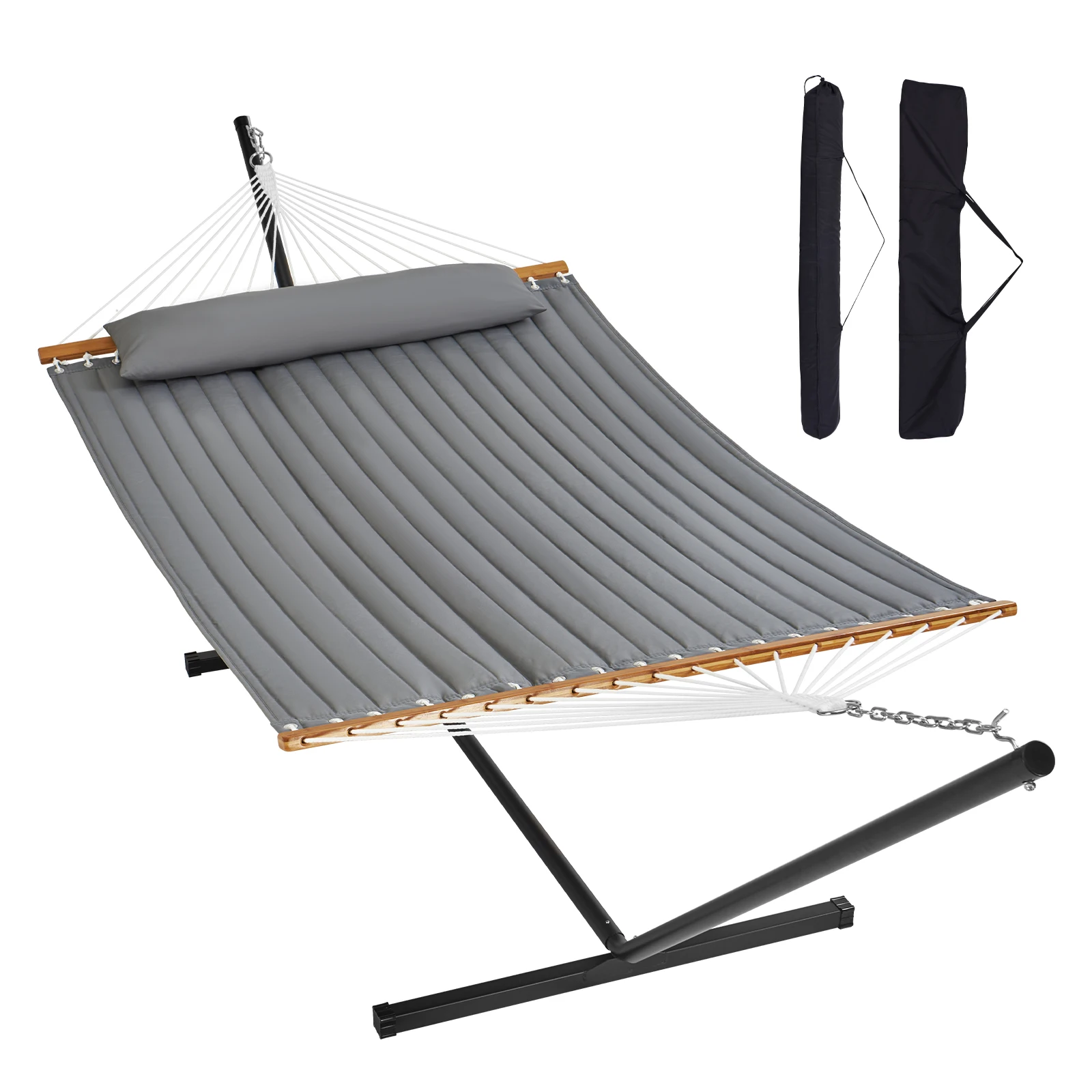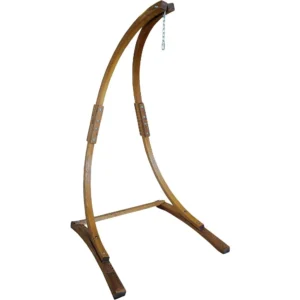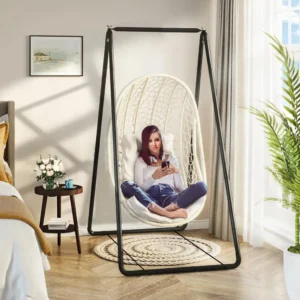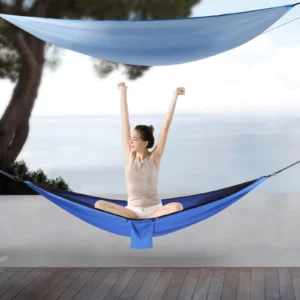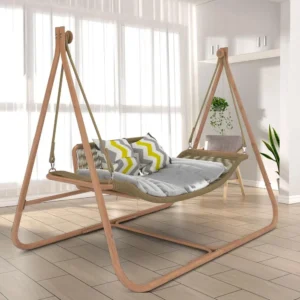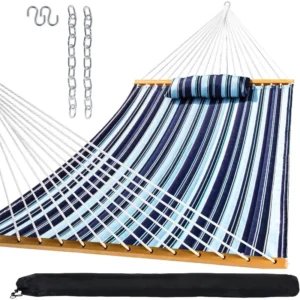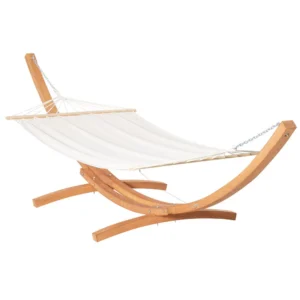The Reality of Outdoor Hammock Exposure: Convenience vs. Longevity
Is it okay to leave a hammock outside? The short answer is: it depends. While you can leave a hammock outdoors, doing so will inevitably shorten its lifespan compared to storing it indoors when not in use. The decision ultimately comes down to balancing convenience against longevity.
Keeping your hammock outdoors offers undeniable benefits. It creates a ready-to-use relaxation spot that enhances your outdoor space and invites spontaneous lounging. There’s no need to set up and take down your hammock every time you want to use it, making your outdoor living experience more seamless.
However, there are significant drawbacks to consider:
- Accelerated wear and material breakdown
- Continuous exposure to damaging elements (sun, rain, wind)
- Risk of mold and mildew development
- Vulnerability to pests and wildlife
- Color fading and fabric weakening
- Potential theft risk in some areas
The fundamental reality is that outdoor exposure will inevitably reduce your hammock’s lifespan, regardless of its material or quality. Understanding indoor versus outdoor hammock placement helps you make informed decisions about how to best enjoy and preserve your investment.
Premium hammocks with stands often represent a significant investment, making protection strategies especially important for these complete relaxation systems.
Understanding Hammock Materials and Their Outdoor Durability
The material of your hammock is the single most important factor in determining how well it will withstand outdoor conditions. Different materials offer varying levels of weather resistance, comfort, and durability.
Cotton Hammocks
- Weather Resistance: Low
- Key Strengths: Superior comfort, breathability, natural feel
- Major Vulnerabilities: Highly absorbent, prone to mold/mildew, weakens when wet, fades quickly
- Best Use Scenario: Occasional outdoor use with consistent storage when not in use
Cotton hammocks offer exceptional comfort but suffer the most when left outdoors. They absorb moisture readily, which can lead to mildew growth within days in humid conditions. UV exposure causes cotton fibers to break down relatively quickly, often showing significant wear within a single season of continuous outdoor exposure.
Polyester Hammocks
- Weather Resistance: Medium-High
- Key Strengths: Excellent color retention, good strength when wet, quick-drying
- Major Vulnerabilities: Can become brittle with extended UV exposure
- Best Use Scenario: Regular outdoor use with some protection from extreme elements
Polyester offers significantly better outdoor performance than cotton. These hammocks resist water absorption, dry quickly, and maintain their color even after sun exposure. With proper care, a quality polyester hammock can withstand outdoor placement for extended periods.
Nylon Hammocks
- Weather Resistance: Medium
- Key Strengths: Lightweight, quick-drying, stretch-resistant when wet
- Major Vulnerabilities: UV damage over time, not as fade-resistant as polyester
- Best Use Scenario: Temporary outdoor setup, camping use
Nylon hammocks strike a balance between weight and durability. While they perform better than cotton outdoors, they don’t quite match polyester’s longevity under continuous sun exposure. They’re ideal for temporary outdoor setups rather than permanent installations.
Olefin/Polypropylene Hammocks
- Weather Resistance: High
- Key Strengths: Exceptional weather resistance, colorfast, mold-resistant
- Major Vulnerabilities: Less soft than natural fibers, can be prone to stretching
- Best Use Scenario: Permanent outdoor installation with minimal protection needs
These synthetic materials are specifically engineered for outdoor use. They resist mold, mildew, staining, and UV damage better than most alternatives, making them excellent choices for hammocks that will remain outdoors year-round.
Acrylic (Sunbrella) Hammocks
- Weather Resistance: Very High
- Key Strengths: Premium weather resistance, exceptional color retention, soft feel
- Major Vulnerabilities: Higher cost
- Best Use Scenario: Luxury permanent outdoor installation
Sunbrella and similar acrylic fabrics represent the gold standard for outdoor hammock materials. They combine the comfort of natural fibers with outstanding resistance to sun, rain, and mildew, though at a higher price point.
Rope Hammocks
- Weather Resistance: Varies by material
- Key Strengths: Excellent airflow, traditional appeal
- Major Vulnerabilities: Many rope types deteriorate outdoors, collect debris in weave
- Best Use Scenario: Depends on rope material (cotton rope: temporary; polyester or nylon rope: extended outdoor use)
Rope hammocks vary dramatically in outdoor durability based on their material. Cotton rope offers poor outdoor resistance, while synthetic ropes can withstand elements much better but still require regular cleaning.
Understanding the differences between cotton, polyester, and rope hammocks can help you select the right material for your outdoor needs.
Hammock Stands
Wood stands provide natural beauty but require significant protection from moisture. Without proper sealing and maintenance, they can rot, warp, or develop mold within months of outdoor exposure. Metal stands (steel or aluminum) offer better weather resistance but may rust or corrode, particularly at connection points, unless properly treated or made from marine-grade materials.
Weather Elements and Their Impact on Your Hammock
Weather is relentless in its impact on outdoor hammocks, with each element causing specific types of damage that accumulate over time.
Sun/UV Exposure
Ultraviolet rays are perhaps the most damaging element for hammocks left outdoors. UV radiation breaks down the molecular structure of fabrics, causing colors to fade and fibers to weaken. Even UV-resistant materials eventually succumb to sun damage, though at a much slower rate. Cotton can show significant fading within 2-3 weeks of continuous sun exposure, while high-quality synthetics might resist noticeable degradation for months or years.
Rain and Humidity
Moisture creates ideal conditions for mold and mildew growth, particularly on natural fibers like cotton. Once established, these fungi can permanently stain and weaken the fabric. Even synthetic materials can develop mold in the right conditions, especially if they remain damp for extended periods. Additionally, repeated soaking and drying cycles cause many materials to expand and contract, accelerating wear.
Wind
Beyond the obvious risk of hammocks being blown away, wind causes physical wear through constant movement. As hammocks sway and rub against connection points, abrasion gradually weakens the material. Wind also drives rain into more protected areas of the hammock and can whip dirt and debris onto the surface, contributing to staining and degradation.
Temperature Extremes
Freezing temperatures can make some materials brittle and prone to cracking, while extreme heat can cause certain synthetic fibers to warp or become permanently misshapen. The dramatic expansion and contraction that occurs with temperature fluctuations puts stress on fibers and connection points alike.
Snow and Ice
Winter precipitation adds significant weight that stretches hammock fibers and puts pressure on attachment points. As snow melts and refreezes, it can work its way into the weave of fabrics, causing damage as it expands. Winter conditions are particularly harsh on hammocks not designed for outdoor exposure.
Climate considerations vary significantly by region. Coastal areas face the triple threat of humidity, salt air, and strong winds. Desert regions present intense UV radiation and dramatic temperature swings between day and night. Understanding your specific climate helps determine appropriate protection measures for your outdoor hammock.
Hammock sets with canopies offer built-in protection from some weather elements, making them practical choices for permanent outdoor setups.
Strategic Hammock Placement: Location Matters
Where you place your outdoor hammock can dramatically influence how well it withstands environmental exposure. Strategic positioning acts as your first line of defense against premature wear.
| Location Type | Protection Level | Best For |
|---|---|---|
| Full sun area | Low | UV-resistant synthetic materials only |
| Partial shade | Medium | Most synthetic hammocks |
| Full shade | High | All hammock types, including cotton |
| Covered porch/patio | Very High | Any hammock material including premium options |
| Under pergola | High-Medium | Most materials with some additional protection |
| Open yard | Very Low | Only weather-specific hammocks with covers |
Locations to avoid include:
– Near sprinkler systems that will regularly soak the hammock
– Under trees that drop sap, berries, or excessive leaves
– Areas frequented by birds that may leave droppings
– Wind tunnels between buildings that accelerate wear
– Low spots where water collects after rain
For optimal protection, position your hammock under a solid roof whenever possible. If using trees for support, choose locations that provide natural shade during peak UV hours while still allowing enough airflow to prevent moisture accumulation. Consider the sun’s path throughout the day and across seasons when selecting your spot.
Understanding the best indoor and outdoor hammock locations can dramatically extend your hammock’s lifespan. Finding the best place to put your hammock involves considering both protection and practical enjoyment factors.
Common Outdoor Damage Problems and Prevention Strategies
Outdoor hammocks face several predictable damage patterns, but understanding these issues helps you prevent them before they compromise your relaxation space.
Mold and Mildew Growth
Warning Signs: Musty odor, green, black, or white spots developing on fabric, slightly sticky feel to the material
Prevention:
– Ensure hammock dries completely after rain or morning dew
– Regularly flip and air out the hammock on sunny days
– Apply mold-resistant spray appropriate for your hammock material
– Remove the hammock during extended rainy periods
Treatment: For minor mold, mix a solution of 1 part vinegar to 4 parts water and gently scrub affected areas, then dry completely in direct sunlight. Severe mold may permanently damage cotton hammocks and require replacement.
Color Fading and UV Degradation
Warning Signs: Noticeable lightening of colors, fabric that feels thinner or weaker, visible fiber breakdown
Prevention:
– Position hammock in shaded area when possible
– Use a UV-protective spray suitable for your hammock material
– Cover or store hammock when not in use
– Choose hammocks made with UV-stabilized materials initially
Treatment: Once UV damage occurs, it cannot be reversed. Applying fabric conditioners appropriate for your hammock material may temporarily improve appearance but won’t restore structural integrity.
Rust and Corrosion of Hardware
Warning Signs: Orange-brown discoloration on metal parts, flaking metal surface, weakening of connection points
Prevention:
– Apply marine-grade lubricant to chains, springs, and other metal components
– Choose stainless steel or galvanized hardware when possible
– Cover metal components during rainy periods
– Regularly inspect and clean connection points
Treatment: Remove minor rust with a wire brush and apply rust converter, followed by protective coating. Replace severely corroded hardware immediately for safety.
Pest and Wildlife Damage
Warning Signs: Small holes in fabric, nesting materials present, visible droppings
Prevention:
– Store food away from hammock area
– Remove hammock when not in use for extended periods
– Use cedar blocks or other natural pest repellents nearby
– Keep surrounding area clean and well-maintained
Treatment: Clean affected areas thoroughly using appropriate cleaning methods for your hammock material. Repair small holes immediately before they expand.
Physical Wear and Structural Weakening
Warning Signs: Fraying at edges, thinning fabric, stretched-out appearance, weakened connection points
Prevention:
– Distribute weight evenly when using the hammock
– Avoid exceeding weight recommendations
– Regularly inspect stress points and reinforce as needed
– Remove hammock during high winds or storms
Treatment: Minor fraying can be repaired with appropriate stitching techniques. For structural concerns, consult the manufacturer’s repair guidelines or consider replacement for safety.
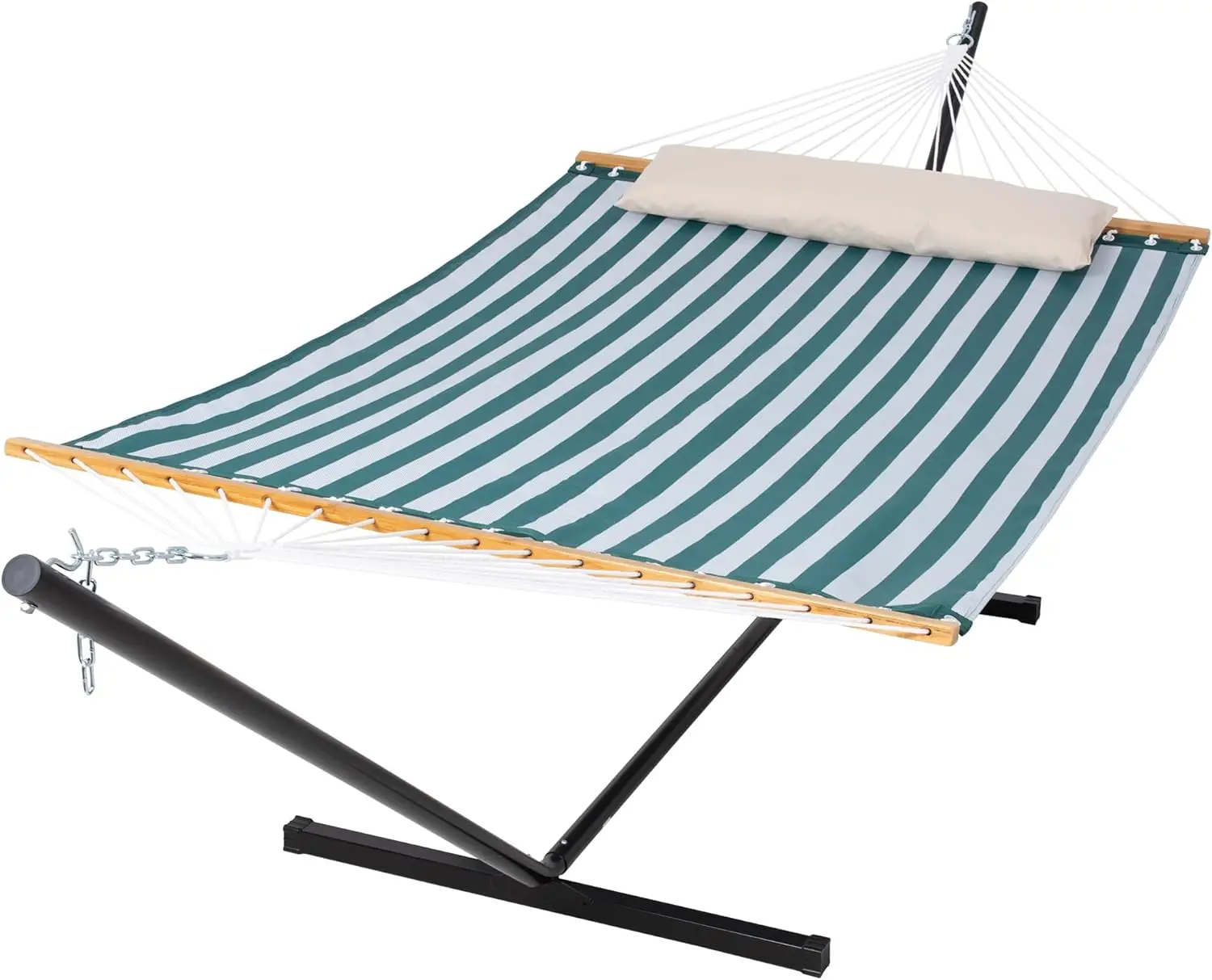
For hammocks that must withstand challenging outdoor conditions, heavy-duty hammock sets provide enhanced durability through reinforced construction and weather-resistant materials.
Essential Protection Methods for Outdoor Hammocks
Protecting your hammock from outdoor elements isn’t optional if you want it to last—it’s essential. These protection strategies can dramatically extend your hammock’s useful life.
Hammock Covers
Quality covers serve as your hammock’s first line of defense. Look for covers with these features:
– Waterproof or highly water-resistant material
– UV-protective coating
– Breathable design to prevent condensation
– Secure fastening system that won’t blow off in wind
– Proper sizing that covers the entire hammock without tight stretching
The best covers envelop the entire hammock rather than just draping over the top. This prevents water from pooling and provides complete protection from debris, bird droppings, and sun damage.
Protective Sprays and Treatments
Different hammock materials benefit from specific treatments:
– Cotton: Water-repellent sprays help reduce moisture absorption
– Synthetics: UV-protectant sprays extend color retention and strength
– All materials: Antimicrobial treatments prevent mold and mildew growth
Apply these treatments according to manufacturer instructions, typically every 3-6 months for hammocks permanently installed outdoors. Note that no treatment makes a hammock completely weatherproof—they simply extend its outdoor lifespan.
Quick-Removal Systems
Installing a system that allows for easy hammock removal provides the best of both worlds:
– Quick-release carabiners at attachment points
– Storage bag mounted near the hammock location
– Clear folding/rolling procedure posted nearby
– Weather-proof storage box within reach
This approach lets you enjoy the convenience of an outdoor hammock while protecting it from unexpected weather or during periods of non-use.
Regular Inspection Routine
Implement a simple inspection schedule:
– Weekly: Quick visual check of attachment points and fabric condition
– Monthly: Detailed examination of all components including hardware
– Seasonally: Complete cleaning and application of protective treatments
Early detection of potential problems prevents more serious damage and extends your hammock’s service life substantially.
Camping hammock sets with bug nets often include additional protective features that can benefit any outdoor hammock installation.
Maintenance Routine: Cleaning and Care Essentials
Regular cleaning is vital for outdoor hammocks, as dirt, pollen, and organic matter can trap moisture and accelerate deterioration.
Cleaning Methods by Material
| Material | Cleaning Method | Special Considerations |
|---|---|---|
| Cotton | Hand wash with mild soap; air dry completely | Never machine dry; avoid bleach |
| Polyester | Hand or gentle machine wash; air dry | Can use gentle machine cycle if necessary |
| Nylon | Hand wash with gentle detergent; air dry | Avoid hot water; dry away from direct sun |
| Rope (synthetic) | Scrub with soft brush and mild soap; rinse thoroughly | Ensure water drains from all rope intersections |
| Rope (cotton) | Gentle hand washing; thorough rinsing; complete drying | May require re-stretching after washing |
| Wood components | Wipe with damp cloth; apply wood protectant seasonally | Never soak; check for splits or cracks |
| Metal components | Clean with appropriate cleaner; apply protective coating | Address any rust immediately |
Step-by-Step Cleaning Process:
- Brush off loose dirt and debris
- Prepare a solution of mild soap and lukewarm water
- Gently clean fabric using soft brush or sponge
- Pay special attention to areas showing dirt accumulation or staining
- Rinse thoroughly to remove all soap residue
- Hang to dry completely in a well-ventilated area
- Ensure hammock is 100% dry before storage or reuse
⚠️ Warning: Never use bleach, harsh detergents, or pressure washers on any hammock material as these can damage fibers and weaken the structural integrity.
Seasonal Maintenance Checklist:
- Spring: Deep clean after winter storage, inspect for damage, apply protective treatments
- Summer: Rinse periodically to remove pollen and dust, check for UV damage
- Fall: Clean thoroughly before potential winter storage, treat wood components
- Winter: If leaving outdoors, use weather-proof covers and remove excess snow load
Thorough drying after cleaning is crucial—even slightly damp hammocks quickly develop mold when folded or covered. After washing, allow at least 24 hours of drying time in good weather before using or storing the hammock.
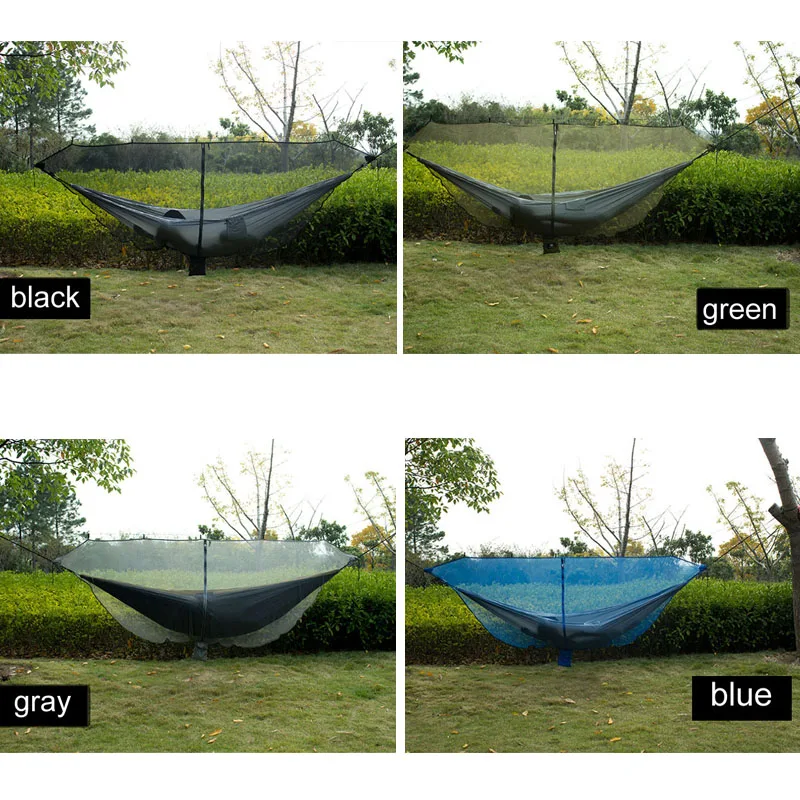
Understanding the proper hammock installation requirements and safety guidelines ensures your cleaned hammock is remounted correctly and securely.
Proper Storage: When and How to Store Your Hammock
Strategic storage significantly extends your hammock’s life, particularly during periods of non-use or extreme weather.
When Storage Becomes Necessary:
- Extended absence (vacations, travel)
- Severe weather warnings (hurricanes, heavy snowfall, hailstorms)
- Winter months in cold climates
- Periods of excessive rainfall
- Extended high UV index forecasts
Pre-Storage Checklist:
- Clean thoroughly according to material-specific guidelines
- Allow to dry completely (minimum 24-48 hours in good conditions)
- Inspect for damage and make minor repairs
- Apply protective treatment if appropriate for the material
- Remove any detachable hardware and store separately
Storage Method by Hammock Type:
Fabric Hammocks:
Fold rather than bunch to prevent permanent creases. Start by folding in thirds lengthwise, then fold in half or thirds width-wise. This distributes stress evenly across fabric.
Rope Hammocks:
Coil loosely to prevent knots and tangles. Avoid tight folding that can create permanent bends in the rope structure.
Hammocks with Spreader Bars:
Remove bars if possible and store separately. If non-removable, ensure the hammock is supported evenly in storage to prevent warping.
Storage Container Options:
| Storage Option | Best For | Considerations |
|---|---|---|
| Original storage bag | Travel hammocks | May be too tight for long-term storage |
| Cotton pillowcase | All fabric hammocks | Breathable but minimal protection |
| Plastic container with lid | All types | Must be completely dry first; include moisture absorber |
| Dedicated hammock storage bag | All types | Best option if well-ventilated |
Ideal Storage Locations:
- Indoor closets with consistent temperature
- Garage shelving (away from floor)
- Under-bed storage containers
- Climate-controlled storage areas
⚠️ Warning: Never store a damp hammock, even slightly moist ones can develop mold within days in enclosed storage.
Implementing proper hammock storage solutions prevents unnecessary wear and extends your investment’s lifespan considerably.
The Final Verdict: Making the Right Decision for Your Hammock
After considering all factors, here’s a practical framework for deciding whether to leave your hammock outdoors.
Material-Based Outdoor Suitability Assessment
| Material | Outdoor Durability | Protection Required | Expected Outdoor Lifespan |
|---|---|---|---|
| Cotton | Poor | Extensive | Months (even with protection) |
| Polyester | Good | Moderate | 1-3 years with protection |
| Nylon | Moderate | Significant | 1-2 years with protection |
| Olefin/Polypropylene | Very Good | Minimal | 3-5+ years with protection |
| Acrylic (Sunbrella) | Excellent | Minimal | 5+ years with proper care |
| Rope (Cotton) | Poor | Extensive | Months (even with protection) |
| Rope (Synthetic) | Good | Moderate | 2-4 years with protection |
Your decision should balance convenience against the inevitable reduction in lifespan. If you value having a ready-to-use hammock and are willing to replace it more frequently, leaving it outside with appropriate protection may be worth the trade-off. If your hammock represents a significant investment or has sentimental value, bringing it inside when not in use will substantially extend its life.
The middle-ground approach often works best for many hammock owners: installing quick-release hardware that makes it easy to take down your hammock during adverse weather or extended periods of non-use, while still keeping it readily available during good weather and active use periods.
Regardless of your decision, implementing the protection strategies outlined in this guide will help maximize your hammock’s lifespan and maintain its appearance and functionality for as long as possible.
Understanding indoor and outdoor hammock safety guidelines ensures that whatever choice you make prioritizes both durability and proper usage.
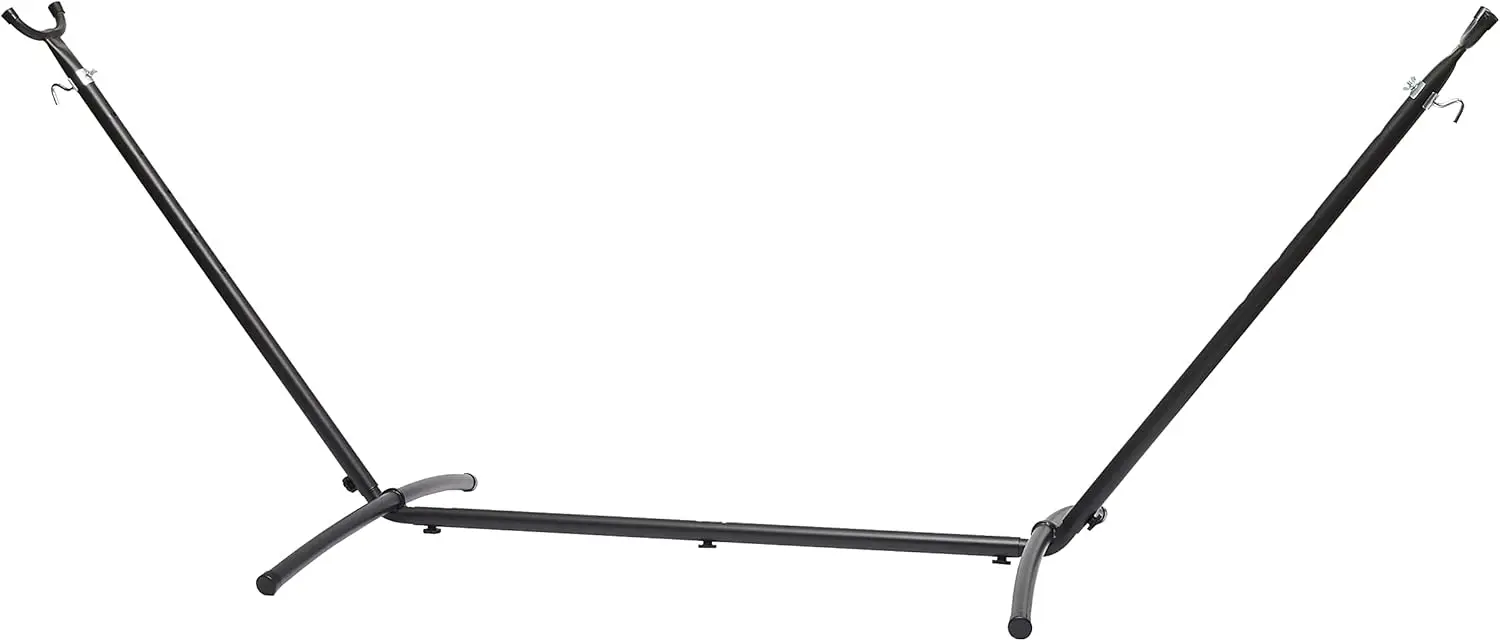
For those committed to outdoor placement, wooden hammocks and stands offer natural beauty with proper weather treatment.
Dark Wood Hammock Sets, Porch Swing Chair Sets
$653.82 Select options This product has multiple variants. The options may be chosen on the product pageA-Frame Stand Hammock Sets, Swinging Hammock Chair Sets
$154.62 Select options This product has multiple variants. The options may be chosen on the product pageCamping Hammock Sets with Bug Net, Ultralight Camping Hammock Sets
$139.72 Select options This product has multiple variants. The options may be chosen on the product pageLight Wood Hammock Sets, Swinging Hammock Chair Sets
$1,359.35 Select options This product has multiple variants. The options may be chosen on the product pageClassic Wooden Stand Hammock Sets, Heavy Duty Hammock Sets
$1,061.68 Select options This product has multiple variants. The options may be chosen on the product page
Frequently Asked Questions About Outdoor Hammock Exposure
How long will my hammock last if I leave it outside all the time?
The lifespan varies dramatically by material, from as little as one season for untreated cotton to 5+ years for premium weather-resistant fabrics like Sunbrella. Even with the most durable materials, expect a 30-50% reduction in lifespan compared to indoor storage when not in use. Tip: Choose olefin, polypropylene, or acrylic hammocks for the longest outdoor lifespan.
Can a hammock recover from getting soaked in the rain?
Yes, most hammocks can recover from occasional rain exposure if dried properly afterward. The key is ensuring complete drying as soon as possible—hang the hammock in a breezy area with good sun exposure and flip it periodically until no moisture remains. Tip: Synthetic hammocks recover much better than cotton after rain exposure.
Which hammock materials are most resistant to mold and mildew?
Synthetic materials like polyester, nylon, olefin, and acrylic have significantly better mold resistance than natural fibers. Among these, olefin (polypropylene) and acrylic fabrics like Sunbrella offer superior mold and mildew resistance. Tip: Even mold-resistant materials benefit from regular cleaning and complete drying after moisture exposure.
How can I protect my hammock from squirrels and other animals?
Remove and store your hammock when not in use for extended periods, as animals are attracted to nesting materials and food residue. Consider applying non-toxic bitter apple spray around edges, which deters chewing without harming wildlife. Tip: Keep your hammock area free of food scraps and regularly shake out the fabric to discourage nesting behavior.
Do hammock stands rust when left outdoors?
Most standard hammock stands will eventually show rust or corrosion when left outdoors, especially at connection points where water can collect. Aluminum stands resist rust better than steel but may still corrode over time. Tip: Apply marine-grade silicone lubricant to joints and connections every 2-3 months to significantly extend your stand’s outdoor lifespan.
Portable hammocks and stands offer a practical solution for those who want the flexibility to move their hammock indoors during harsh weather.
Bonus: Premium Hammock Features Worth the Investment
When selecting a hammock destined for outdoor placement, certain premium features significantly enhance durability and justify the higher price point.
• Solution-dyed acrylic fabrics where color is added during fiber creation (rather than after weaving) resist fading for years longer than standard dyed fabrics
• DuraCord or other high-performance rope materials combine the feel of cotton with synthetic weather resistance for rope hammocks
• Marine-grade hardware with specialized coatings prevents rust and corrosion even in coastal environments
• Quick-dry foam in padded hammocks prevents water retention and subsequent mold growth
• Modular designs where individual components can be replaced extend the overall product lifespan significantly
• Double-stitched seams with UV-resistant thread maintain structural integrity even after prolonged sun exposure
While these premium features increase initial cost, the extended lifespan often makes them more economical in the long run. A quality hammock with these features might cost twice as much as a basic model but last three to five times longer outdoors, representing better value over time.
The difference becomes particularly apparent after the first full year of outdoor exposure, when standard hammocks begin showing significant wear while premium options maintain their appearance and structural integrity.

